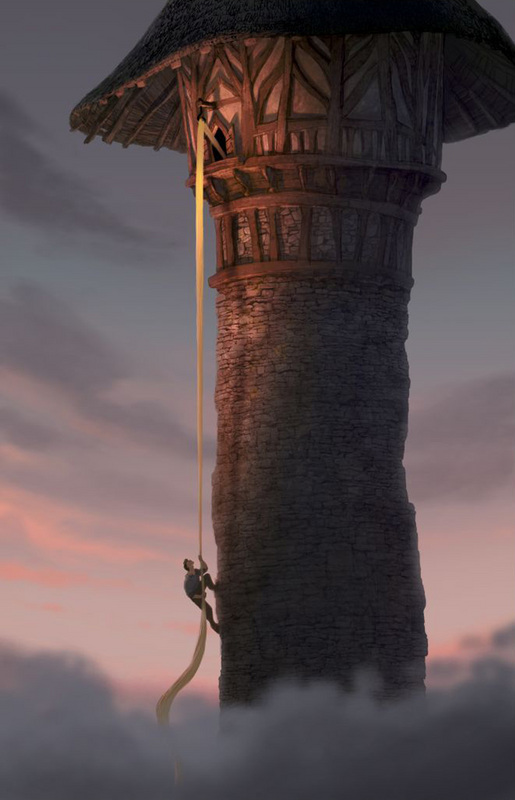The version of Rapunzel entitled "Petrosinella" written
by Giambattista Basile has many similarities to the story line of Kalyani and
madam Didi in the film Water.
Identifying elements of myth: “Petrosinella" and
“Water”
1. Isolation
Petrosinella is taken from her home and forced to live alone
with the ogress against her will. I am sure she didn’t want to but she went
with the ogress anyway. She was forced to go because of something that was out
of her control. It wasn’t her fault that her mother made a promise to the
ogress.
 Kalyani was in a very similar position. Her husband died
making her a widow. In India culture at the time widows were cast out of
society and looked upon with malice and distaste. They were sent to live in
places such as temples in order to keep their “filth” away from the rest of the
population of India. It was not Kalyani fault her husband died and it wasn’t
her choice to live as an outcast.
Kalyani was in a very similar position. Her husband died
making her a widow. In India culture at the time widows were cast out of
society and looked upon with malice and distaste. They were sent to live in
places such as temples in order to keep their “filth” away from the rest of the
population of India. It was not Kalyani fault her husband died and it wasn’t
her choice to live as an outcast.
They both also lived in a tower of sorts. Petrosinella lived
in an actual stone tower in the woods and Kalyani lived in a high apartment in
the temple.
2. Manipulation of Innocence
Petrosinella was wanted and used by the ogress for a reason
we do not know. I do not understand why she wanted to raise a child if all she
did was keep her locked away.
Kalyani was also used and abused by her leader, madam Didi. Much like the ogress madam Didi did not care at all about the way she treated Kalyani.
The only thing she cared about was being able to pimp her out so that the
widows would be provided for. However she was a cruel and unfair leader who
took more for herself as others in her care suffered.
3. Sweet Souls Unaffected by Evil
Petrosinella even though she was taken from her mother and
family she still managed to have a kind loving heart. She had faith in people
that not everyone was bad. She quickly opened her heart and her body to the
prince.
Kalyani also had a sweet spirit even when living a life
where others looked at her with contempt. She was quick to smile and put others
before herself. One thing that I admired about Kalyani was her affection to her
puppy she adopted as her own. She also took Chuyia (a child widow living in the
temple) under her wing and acted as a mother figure for the young girl.
Petrosinella found love in her royal prince. It was a
forbidden romance and one that they kept quiet from the ogress. The prince was
able to see Petrosinella by climbing up her long hair that she threw out the
one small window.
Kalyani had a secret love as well with a man named Narayan. He was a rich man and of the highest caste in India. At first Kalyani did not hope to find love and often tried to avoid him. However their attraction grew and it was inevitable that they should be together. Kalyani and Narayan could not let anyone know about their relationship so they too met in the secret of night.
5. Villains Stood in the Way of Happiness
In the story of Petrosinella the ogress did not want her to
be happy and run away with the prince. In fact she was determined to keep them
apart by using her magic acorns. However, Petrosinella gets to the ogress’
magic acorns before she does and uses them against her.
In the movie Water
madam Didi also stands in the way of love between Kalyani and Narayan. Didi
tries so hard to keep them apart that she shaves Kalyani’s head in hopes that
without her beautiful long hair Narayan will no longer love and desire her. But
Didi doesn’t stop there, she also throws Kalyani in her room, shuts and door
and locks her in there. She though that by putting a lock on her door there
would be no way that she could escape and run away and get married to Narayan.
I think the director of the film Water, Deepa Mehta used many of these themes because they are so prevalent in today’s society. Myths are often times truths that are too hard to handle or they point out things that people often want to forget. An interesting part of the film Water is the connection to the story of Radha and Krishna. These two were a symbol of love and devotion for the people of India. And though some myths have unhappy endings I have noticed that many still have some type of interpretation of what love is.





No comments:
Post a Comment